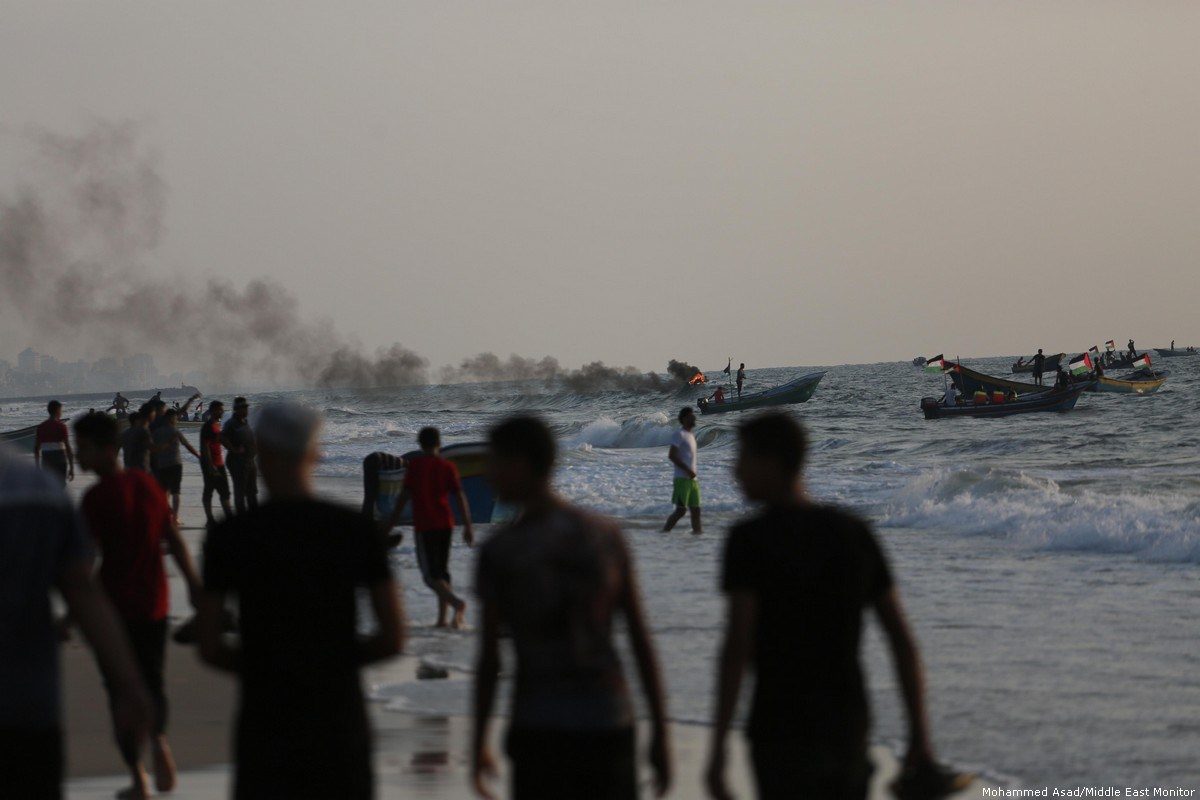
Given the increasing economic pressures on the residents of the besieged territory, they have been forced by circumstances to look at new ways to try to put pressure on Israel to ease or remove the blockade altogether. One such way has been the Great March of Return protests on the nominal border of the Gaza Strip controlled by the Israeli occupation authorities; the first march took place on 30 March.
To-date, tens of thousands of Palestinians have participated in these protests, during which more than 200 have been killed and thousands more injured. The size of the protests has kept the Israeli soldiers on the border on high alert and disrupted the lives of settlers. Warnings have been issued about them leading to a new war between the resistance groups and Israel at a time when neither side wants such a development. This has prompted many regional and international mediators to intervene and try to reach an agreement that would ease the intensity of the siege.
I believe that it impossible for the status quo in the Strip to continue. We have two options: either the current blockade on Gaza is lifted or Israel moves to occupy and control Gaza completely, for which there would be a high military, political and economic price to be paid.
The protests on the Gaza border cannot last forever at this pace. They can't end due to the disastrous economic crisis facing almost everyone in the enclave, especially the youth, who are most enthusiastic about protesting and most in need of job opportunities which will allow them to build a future. Alternatively, the protests could increase in intensity leading to more Israeli crimes against the protesters and a corresponding response from the resistance groups. This will lead to another Israeli military offensive.
The problem for the Israelis this time is that another offensive will not end in a truce that ensures calm for several years to come, as was the case in the past. Assessments indicate that the day after the war is declared to be over, clashes and incendiary balloons will return to the border zone.
Hence, if Israel wants to launch a new offensive against the Palestinian resistance factions, headed by Hamas, its goal must be to remove the movement from the de facto government of the Gaza Strip, regardless of the military price required. Israel's dilemma is that the territory would then become a hotbed of unrest unless an alternative is found which is capable of imposing full control over the Strip, not least because Hamas will immediately begin to regroup and rebuild its strength.
Some Israeli newspapers have reported that the government in Tel Aviv has offered some Arab states control over the Gaza Strip, but they have refused; this proves that Israel is thinking about its options. However, it is doubtful that it will find anyone willing to take on this task. Even the PA will be unable to restore complete control in Gaza, although it might enable Israel's wish of separating the Gaza Strip from the West Bank, on the basis that Gaza and parts of the Sinai could be the site of a future "Palestinian state".
In light of all of this, as well as the continuation of the Great March of Return protests, Israel really has no choice but to ease the siege on the Gaza Strip. This is evident in the attempts by Egypt and the UN to formulate a truce agreement that does just that. It would be a way for Israel to buy time until it finds the right moment to change the situation in Gaza radically if it can. It could also signify that the resistance groups in Gaza are waiting for the right moment to put pressure on the Israelis to agree to a deal that would establish a Palestinian state covering the Gaza Strip and the West Bank.
This article first appeared in Arabic in Arabi21 on 4 November 2018



Reader Comments
to our Newsletter